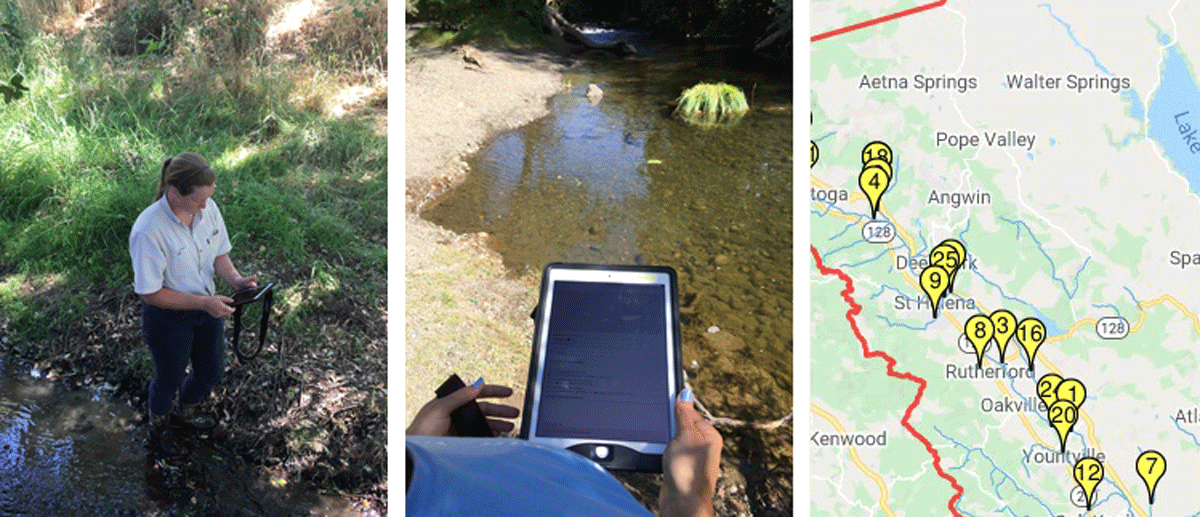Friends of the Napa River are excited that the RCD's Stream Watch program is rolling out this month! In August we told you about the Stream Watch program, which we helped to develop. It will help fill an important environmental data gap by documenting the presence or absence of flow in Napa River tributaries. Here's the story, from the RCD's Ashley Kvitek:
Just in time for the upcoming rainy season, we are seeking volunteers to help us monitor streams in the Napa River Watershed. We've identified 26 locations throughout the watershed that will serve as indicators for overall stream conditions. And now, we need your help to figure out when these stream locations start flowing, when they go dry, and which ones have litter that needs to be picked up.
It is important to monitor stream flow conditions over the course of the year and over many years because the timing of flow impacts habitat quality for a variety of local animal, plant and fish species. We want to understand current habitat conditions, and be able to track trends over time.
In some cases, land managers along a stream may be able to enhance stream flow for aquatic life by taking coordinated conservation actions on the land. We will use the monitoring information to identify these locations, and help our community plan and prioritize conservation actions in the stream reaches that need it most.
We have also built in a trash observation component to the monitoring. The reporting of whether or not a stream is littered will help guide another of our volunteer programs, Waterway Keepers!
If you're interested in learning more about Stream Watch, join us for a WILD Napa talk on November 18 at 7pm on Zoom and Facebook Live. You can also visit the Stream Watch website to find instructions for how to get started monitoring--- today!
Contact Ashley with questions: Ashley@NapaRCD.org or 707-690-3117





